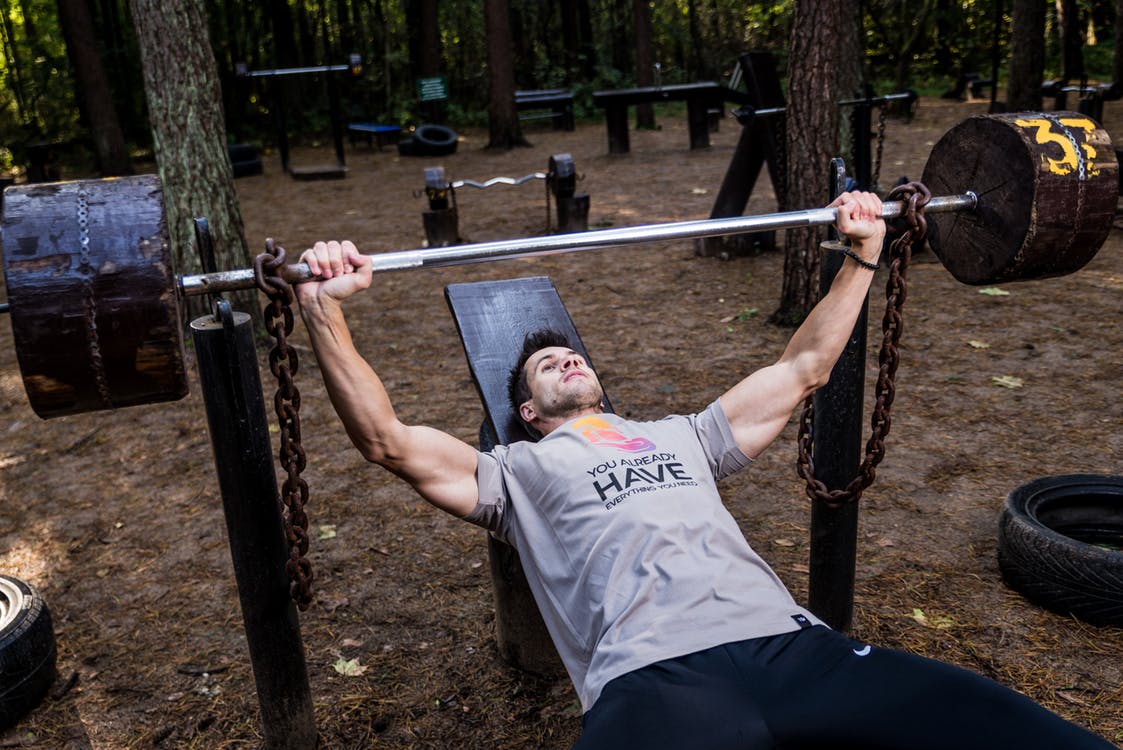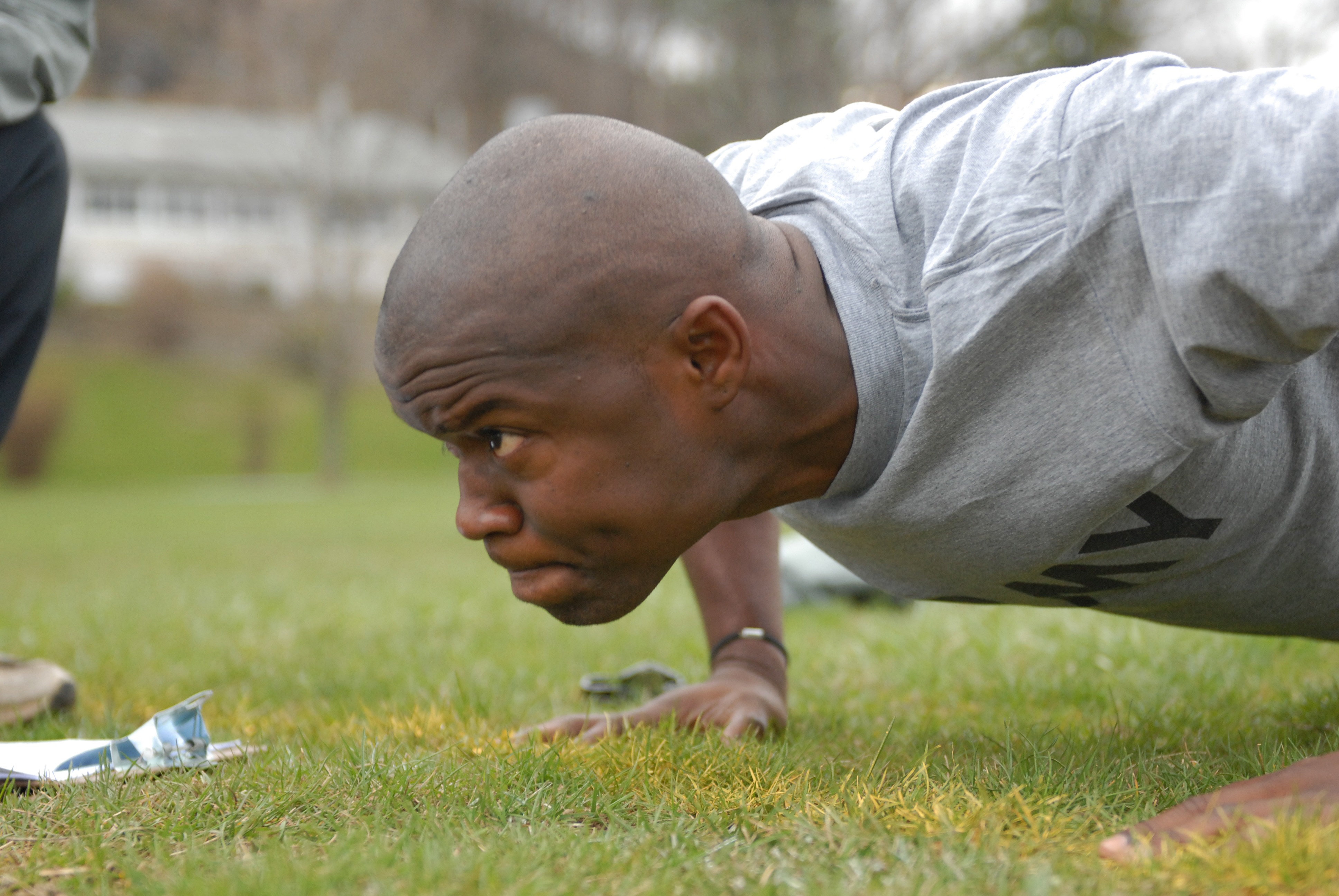This blog is going to cover two concepts that came up in a recent study. The first is complex training, nowadays called postactivation potentiation. The second is the use of chains, nowadays called accommodating resistance training.
With complex training we pair a heavy strength exercise with a similar plyometric one. For example, a heavy squat and a vertical jump. The idea is that the heavy exercise maximally recruits the nervous system and the plyometric exercise takes advantage of that recruitment. In other words, there is a potentiating effect on the performance of the plyometric exercise.
Chains have been done to death in other places. The interesting idea here was to see if chains, used as part of the heavy strength training, will improve performance on the plyometric exercise during complex training. Jones et al studied this in the Journal of Strength and Conditioning Research. Their study was designed to determine if using chains with the bench press would enhance force, power, and time to peak force/power during a plyometric push-up. The authors studied 13 division I wrestlers.
Subjects performed three plyometric push ups (push up on a force platform where the subject exploded to the point of their hands leaving the ground), six bench presses with either 60% of estimated 1-RM in weight plates or in chains, then another three plyometric push ups on the force platform. Subjects then did another set of the bench press followed by three more plyometric push ups.
Results from the first set to the second:
- The plate group lost almost 20% of their peak power on the push ups, the chain group almost 12%.
- The plate group lost almost 13% of their time to peak power and the chain group almost 9%.
- The plate group gained almost 4% on their peak force on the push ups and the chain group gained approximately 6%.
- The plate group lost almost 48% on their time to peak force on the push ups and the chain group lost almost 26%.
From the second set of push ups to the third:
- The plate group lost almost 3% of their peak power on push ups, the chain group almost 4%.
- The plate group had essentially no change on their time to peak power, the chain group gained almost 3%.
- The plate group gained almost 7% on their peak force, the chain group almost 8%.
- The plate group lost almost 16% of their time to peak force and the chain group gained almost 75%.
Let’s look at the results in a little more detail by considering some questions. First, does performing six repetitions of the bench press at 60% of estimated 1-RM with plates or with chains only have an impact on upper body peak power as measured by plyometric push ups? Both groups saw a reduction in peak power, with the plate group seeing a larger reduction on the second set of push ups and the chain group seeing a larger reduction on the third.
Does performing six repetitions on the bench press with 60% of estimated 1-Rm with plates or chains impact the time it takes to get to peak power on the plyometric push up? Both plates only and chains only saw a reduction in the time to peak power on the second set, with the plate group seeing a larger reduction. It needs to be kept in mind here that the plate group also had the largest reduction in peak power, so it makes sense that if peak power was reduced by almost 20% that the athletes would be able to get to that lower value more quickly.
Does performing the bench press for six repetitions with 60% of estimated 1-RM in plates or chains have an impact on peak force? Both groups increased their peak force. The chain group increased theirs more than the plate group on the second and third sets of push ups.
Finally, does performing the bench press for six repetitions with 60% of estimated 1-RM in plates or chains have an impact on the time to get to peak force on the plyometric push up? On the second set, the chain group decreased their time to peak force by almost 48%, the chain group by almost 26% (i.e. both groups got to their peak force faster). On the third set of push ups, the plate group decreased their time to peak force by almost 16%, the chain group increased theirs by almost 75%.
Now, the big questions to take from this study. In theory, heavy strength training performed before a plyometric exercise will have a potentiating effect on the nervous system, allowing the athlete to be more explosive. In the old days we called this complex training. Did the bench press have this type of effect on the plyometric push up? The answer is mixed. The bench press reduced peak power, increased peak force by 4-8% depending upon the set number and the use of chains or plates, and mostly reduced the time to peak power and the time to peak force. So if the need is a greater force output then performing the bench press prior to an upper body explosive movement might be warranted, but it doesn’t look like it had a good impact on power production.
The other question is whether chains were “better” than traditional weight plates. One interesting thing to take from this study. Chain weights meant the bar was used with chains, not weight plates. In other words, there were no weight plates on the bar for the chain group. Chains were marginally better at improving peak force during the plyometric push up (6% vs 4%, 8% vs 7% on the second and third sets respectively), marginally better at improving peak power (loss of 12% vs 19% and loss of 4% vs 3% on the second and third sets respectively) but worse at the time to peak power and the time to peak force.
Before I get to my $0.02. Things to consider. First, maybe 60% isn’t heavy enough to produce a potentiating effect. Maybe 80-90% of 1-RM would have a different impact on performance.
Second, this might require training and more advanced athletes to show a potentiating effect. This was an acute study, in other words the subjects did the intervention and were tested. There was no long-term impact from training. If you are not used to a training intervention then it is going to rock your world and have a negative impact on performance. On the other hand, if they trained like this for four to six weeks then it might look very different. Not too many coaches will try a new training approach the day of a game for just this reason, it’ll have a negative impact on performance. But give us four to six weeks to prepare the athlete and the results will be different…
Complex training has been around since the 1960’s. It sounds great in theory but research has not shown it to be a magic bullet for performance. Having said that, it is an incredibly efficient way to use an athlete’s time during the season when time is so short. Combining strength and plyometric exercises gives the athlete the best of both worlds. What’s unclear is if this type of training prior to a game or competition will improve performance and for how long.
Jones, M.T., Oliver, J.M., Delgado, J.C., Merrigan J.J., Jagim, A.R., and Robison, C.E. (2019). Effect of acute complex training on upper-body force and power in collegiate wrestlers. Journal of Strength and Conditioning Research, 33(4), 902-909.




